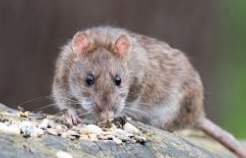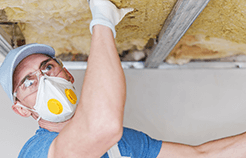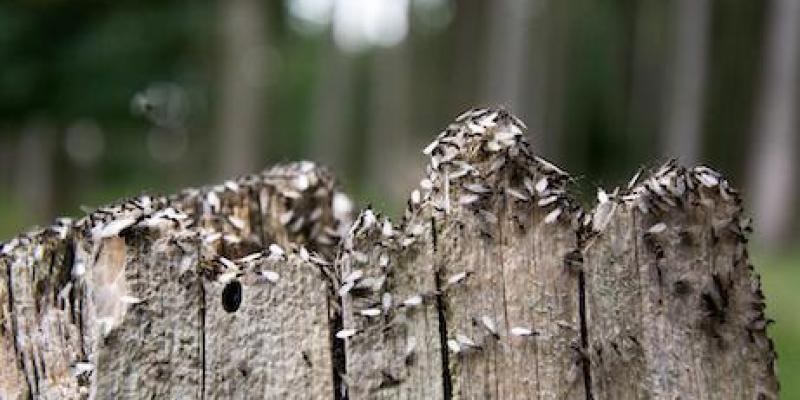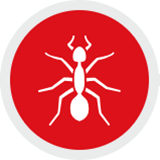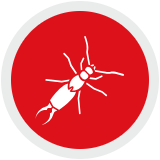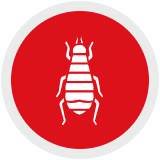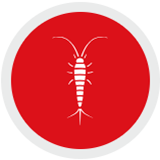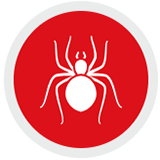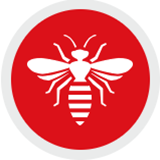Sometimes it can be tricky to tell whether you’re looking at an ant or a termite. Are they actually that different? Though they might not look it, ants and termites have very distinct behaviors and physical features. We’ll give you some slick tips and tricks for distinguishing between these common pests. We’ll take a look at:
What do Ants vs Termites Look Like?
Though ants and termites have similar habitats and appearances, some tell-tale signs allow you to easily recognize them. You can tell ants apart from termites by their bodies, wings, and antennae.
Ant Identification
- Body: Ants have bodies that are clearly separated into the head, abdomen, and thorax.
- Wings: Flying ants have larger front wings and much smaller back wings.
- Antennae: Ants have long bent antennae (like an elbow) protruding from their heads.
Termite Identification
- Body: Termite bodies are only a head and long body section, without a clear abdomen and thorax.
- Wings: Termite wings are long and the front wings are the same size as the back wings.
- Antennae: Termites have short, straight, “beaded” antennae.
Types of Ants vs Termites
While there are four common types of ants in Washington, there are only two types of termites common to the state.
Types of Ants
- Odorous House Ants: Commonly called “sugar ants,” these tiny black ants are most commonly spotted in the kitchen as they scour homes for food to feed one or more colonies. They’re more a nuisance than a destructive pest, though they can do quite a number on your pantry if food isn’t secure!
- Carpenter Ants: This species of ant is most often confused with termites because they nest in wood (though they don’t eat wood, as termites do). Carpenter ants are huge—about the diameter of a penny from tip to tail—and commonly damage the wood in homes throughout the Pacific Northwest as they build their nests.
- Moisture Ants: About ⅛” long, moisture ants are gold, reddish, or brown in color and usually nest in soil or rotted wood. They’re not as much of a problem for homeowners as termites or carpenter ants because they generally eat wood that is already rotted out.
- Pavement Ants: Tiny and black like sugar ants, pavement ants are commonly found in cracks in sidewalks, driveways, or in patios. They don’t generally come into homes.
Types of Termites
- Western Subterranean Termite: Across the United States, subterranean termites cause more damage to homes than any other pest. They are relatively small (between ⅛ -⅜ inches in length), live in the soil, and send workers out to find wood to feed the colony. They need to remain in high-moisture environments, so they build “mud tubes” that bridge the soil and wood they feed on, making most homes fair game.
- Pacific Dampwood Termite: Dampwood termites nest in moist wood and are the largest termites species in North America (about ½ inch in length). Since they require high amounts of moisture, they only infest homes that have a moisture problem, such as a leaky roof.
What Does Ant vs Termite Damage Look Like?
One way to identify the pest that has infested your home is based on the damage that it has caused.
Ant Damage
Carpenter ants carve out galleries to nest in wood but don’t eat the wood as termites do. So the galleries excavated by carpenter ants will look clean and polished as if all the tunnel walls had been sanded down with fine grit. They drop their waste—such as wood shavings, frass (feces), and even dead ants—out of small windows punched in the surface of the wood they’re infesting. This debris will pile up on the ground and is a dead giveaway that carpenter ants are at work in a home.
Termite Damage
Subterranean termites take great care not to break the surface of the wood they’re devouring, so it can sometimes be difficult to recognize their presence. Common evidence of termites is hollow-sounding wood or paint that looks like it’s bubbling from water damage. Mud Tubes often give away subterranean termites, as well, showing where they are climbing from the soil to wood on which they can feed.
Termites eat the wood they burrow through. If you opened up a chunk of infested wood, you would see that the termite gallery walls are packed with soil (a mix of saliva, fecal matter, and soil). The interior wood looks gritty and rotten as a result.
How Do You Get Rid of Ants vs Termites?
For both ants and termites, the simplest and most foolproof solution is always to call a professional exterminator. Since they remove pests like ants and termites on a daily basis, they have a robust understanding of the most effective, efficient, and safe ways to get rid of these insects. However, there are several DIY removal methods, too!
Ant Control
Keeping a clean home will go a long way in protecting you against odorous house ants, but ousting carpenter ants from your home is a touch more involved.
Your best bet for controlling carpenter ants in your home is by drilling small holes (about ⅛ inches in diameter) in infested wood, then puffing borate dust into the holes. This naturally occurring chemical will kill all ants it encounters, ideally destroying the colony as a whole.
The next step is replacing damaged wood so your home is sound, which you might want to hire a licensed contractor for.
Termite Control
Termite control can be difficult to do as a layperson. Most exterminators will: first use termiticide to kill termite colonies, then install bait stations that attract termites and kill the whole colony, and finally implement preventative treatment.
Termite treatment options include:
- Termiticides—Many termite control professionals will dig a trench in the dirt around your home, then fill it with a termiticide that kills termites—either on contact or slowly so it spreads to the colony and kills it.
- Bait stations—Bait stations placed every 10 feet or so around a home attract worker termites foraging for food. They bring the bait, and its active ingredient, back to feed the rest of the colony. The delayed effect of the active ingredient allows it to spread to, and kill, the entire colony.
- Fumigation—Some pest control companies will put a tent over a home, then fill the tent with toxic gas that kills all termites in a home.
- Preventative treatment—During the construction or renovation of a home, termite pros can spray wall studs or wood near the ground with borate, or treat the soil around the foundation with termiticide.
Get Help From The Professionals
Whether you need help identifying an infestation, discussing treatment options, or are ready to schedule your ant control service, you can count on Eastside Exterminators to be there to help. Contact us today to learn more about our services.

 (425) 318-7912
(425) 318-7912
 MY ACCOUNT
MY ACCOUNT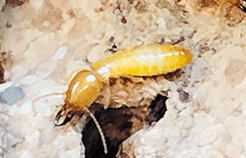
 425-318-7912
425-318-7912